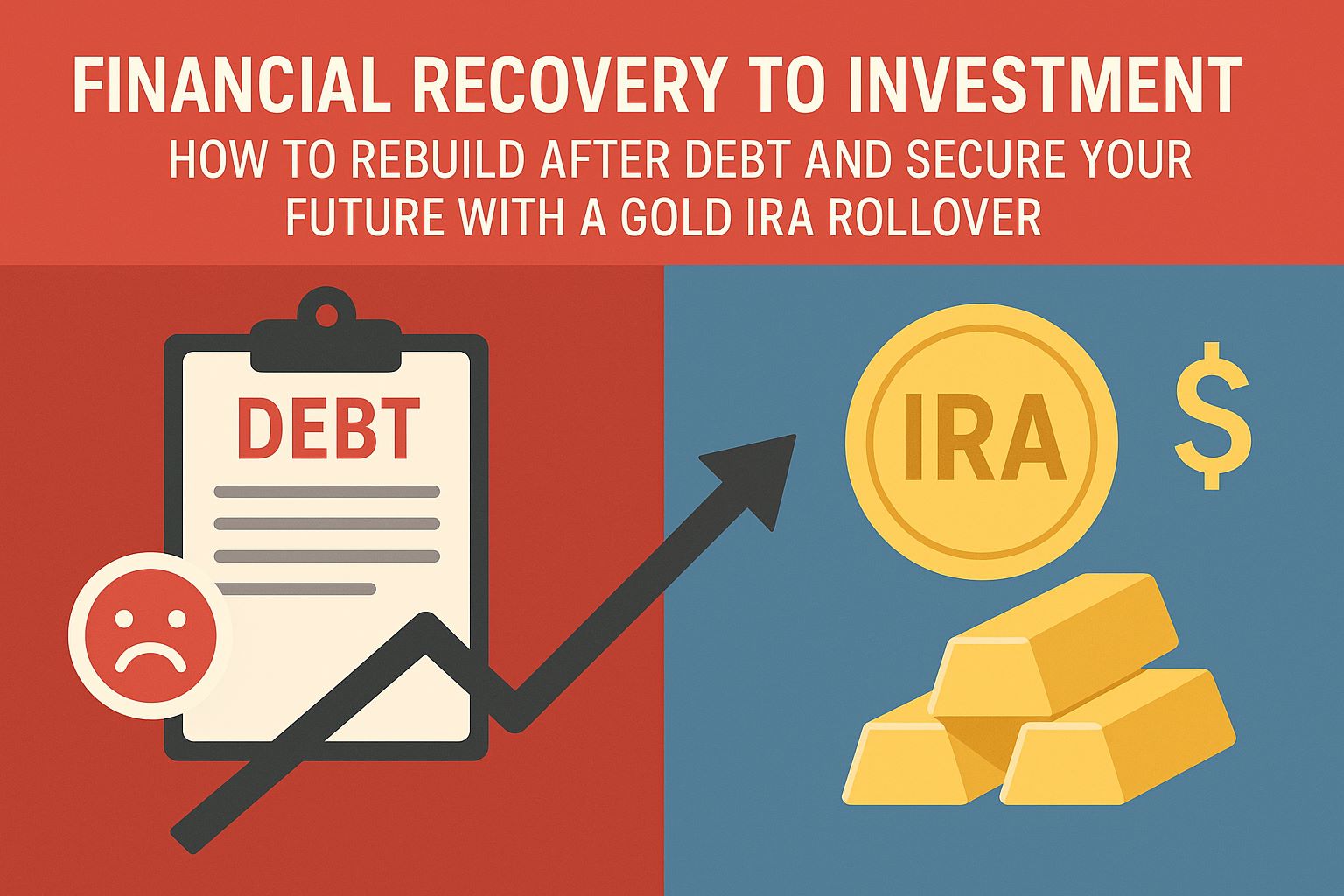Facing debt can feel overwhelming, especially for those approaching retirement who may worry about protecting what they’ve worked so hard to build. But there is a proven path from financial hardship to lasting wealth—one that starts with recovery, leads through credit repair, and culminates in smart, stable investments like physical gold.
In this guide, we’ll explore how retirees and pre-retirees can transition from debt to long-term financial security, including how a Gold IRA rollover can play a key role in protecting and growing your savings.
Table of Contents
- 1 Step 1: Acknowledge and Address the Debt
- 2 Step 2: Begin Rebuilding Your Credit Profile
- 3 Step 3: Protect What You’ve Rebuilt
- 4 Step 4: Explore a Gold IRA Rollover
- 5 Step 5: Align Your Investment Strategy with Your New Financial Outlook
- 6 Common Concerns About Gold IRA Rollovers (And Why They’re Manageable)
- 7 Conclusion: The Smart Path from Setback to Security
- 8 ✅ Next Step: Get Your Free Gold IRA Guide
Step 1: Acknowledge and Address the Debt
Whether it was credit card debt, medical bills, or financial missteps, the first step toward financial recovery is acknowledging the problem and taking action. Many Americans have turned to debt relief programs or consolidation services to manage their obligations more effectively.
If you’ve recently paid off or are close to settling your debts, that’s already a major victory. Now, the question becomes: what’s next?
Step 2: Begin Rebuilding Your Credit Profile
Debt resolution often leaves behind a bruised credit score. While this might seem like a setback, it’s also an opportunity. By managing existing accounts responsibly and avoiding new high-interest debt, your credit can recover steadily over time.
Here are three tips for restoring credit health after debt:
- Check Your Credit Reports for errors and dispute any inaccuracies.
- Keep Credit Utilization Low, ideally below 30% of your available credit.
- Make Timely Payments on remaining accounts to build a positive payment history.
Improving your credit profile not only opens financial opportunities, but also signals that you’re ready to start thinking about wealth-building strategies, including investments that don’t rely on borrowing or risk exposure.
Step 3: Protect What You’ve Rebuilt
Many retirees are concerned about the safety of their assets, especially during times of inflation, market volatility, or geopolitical tension. After spending years overcoming debt, the last thing you want is to put your financial future at risk with unstable investments.
That’s where precious metals—particularly gold—come into play.
Gold has been trusted for centuries as a hedge against inflation and currency devaluation. It holds intrinsic value, is immune to stock market crashes, and can act as a safe haven in uncertain times.
Step 4: Explore a Gold IRA Rollover
If you have an existing retirement account, such as a Traditional IRA, 401(k), or 403(b), you may be eligible to roll over a portion of those funds into a Gold IRA—a self-directed IRA that holds physical gold and other precious metals.
Here’s why a Gold IRA rollover makes sense for investors in financial recovery:
- ✅ Preservation of Wealth: Gold historically maintains value during market downturns.
- ✅ Diversification: Helps balance risk by reducing exposure to stocks and bonds.
- ✅ Tax Advantages: Similar to traditional IRAs, Gold IRAs offer tax-deferred growth.
- ✅ Control Over Assets: Self-directed IRAs allow you to choose physical assets, not paper-backed investments.
✅ Pro Tip: Look for a trusted Gold IRA provider who offers secure storage, clear fees, and IRS-approved metals.
Step 5: Align Your Investment Strategy with Your New Financial Outlook
You’ve worked hard to overcome debt—now your investment strategy should reflect a mindset of stability, not speculation. Focus on capital preservation and income stability, rather than chasing aggressive returns.
Consider this three-part approach:
- Allocate Wisely: Diversify between fixed-income sources, equities, and tangible assets like gold.
- Plan for Longevity: Make sure your savings can sustain you through retirement.
- Review Regularly: Reassess your strategy each year or as financial circumstances change.
Common Concerns About Gold IRA Rollovers (And Why They’re Manageable)
Many retirees hesitate to roll over retirement funds into physical gold because of perceived complications. Here are a few clarifications:
- Storage: Your gold is stored in secure, IRS-approved depositories—not at home.
- Liquidity: You can sell or liquidate metals within your IRA when needed.
- IRS Compliance: As long as you use a qualified custodian and follow rollover rules, your Gold IRA remains compliant and tax-advantaged.
Conclusion: The Smart Path from Setback to Security
You’re not alone if you’ve faced debt in your 50s or 60s—millions of Americans share that experience. But your financial journey doesn’t have to end there. With proper planning, patience, and strategic investing, you can transition from financial recovery to investment confidence.
By integrating tools like credit repair, debt consolidation, and eventually, precious metals IRAs, you can protect your nest egg, hedge against inflation, and build peace of mind in retirement.
✅ Next Step: Get Your Free Gold IRA Guide
If you’re considering a Gold IRA rollover as part of your recovery and wealth protection plan, we recommend requesting a free investor guide from one of the top-rated providers. It includes:
- How Gold IRAs work
- IRS-compliant rollover rules
- Fees, storage, and custodian comparisons


